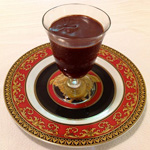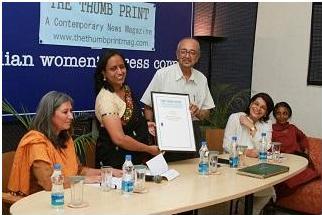The festive Season is beckoning. A special Christmas dinner generates images that we remember for a lifetime. Actually, our dentist made me think about the importance of traditions for our life. He insists that his wife makes a turkey for Christmas. “We are creating memories’, was his explanation. I have grown up with the Christmas turkey, but I did not implement this bird for our son as we are living in Goa, India. I had tried to cook a turkey the first Christmas here, but found the bird too leathery.
I did not want to mess up another Christmas dinner so I substituted the turkey in the following years with capons (huge chickens) - until I researched how capons become so succulent and big. If you don’t know anything about capons, keep your sweet innocence.
Then Masterchef Australia changed our lives. I watched the contestants repeatedly deboning and stuffing chickens. On the Internet I found a wonderful video from the French chef Jaques Pepin that makes it look very easy. I asked my mother for the turkey-stuffing recipe of my late father used and went to work. A bit of warning: Deboning a chicken is not for the squeamish or faint at heart. I consider it a test. I eat meat so I should be able to handle it.
My first try was such a success with my men that I want to introduce it to you. One stuffed bird disappeared immediately and the other one did not make it longer than one day. Now I know what our traditional Christmas bird is going to be. The best of all: You can prepare this kind of Christmas bird one day in advance. On Christmas day, you just pull it out from the fridge and pop it into the oven. My stuffing is for dedicated meat eaters. If you want, you can substitute it with a vegetable stuffing. If my men would not insist on the meaty kind, I would stuff the bird like Jaques Pepin with spinach, mushrooms, a bit of garlic and some toasted almonds.
Wishing you happy cooking, always!
Kornelia Santoro with family
Kornelia’s Christmas Bird
Ingredients:
1 chicken, as large as possible with intact skin
100 grams chicken liver
50 grams minced meat
100 grams stale bread, cut into small pieces
3 cloves garlic
1 bundle parsley
1 egg
2 tablespoons olive oil
Salt
Pepper
Needle and thread
Cotton rope for tying the chicken
Method:
You start with making the stuffing. Clean the chicken liver from fat and veins, cut it and blend it to a pulp. Add the minced meat, the bread, the cleaned and smashed garlic, the finely chopped parsley and the egg. Season with salt and pepper and mix it until you have a paste. It should be a cream that is easy to spread. If it seems to liquid, add some more bread. If you want some zing, add some chillies of any kind.
Now comes the interesting part, deboning the chicken. I recommend to watch Jaques Pepin on Youtube http://www.youtube.com/watch?v=kAekQ5fzfGM.
He explains it better than I ever could in writing. However, the chickens in Goa don’t look as neat as the one in the video. First of all, you have to remove the neck. Just take a big knife, cut through it and it comes away easily. For the rest of the deboning, follow the instructions in the video. All chickens in Goa don’t come with intact skin. They usually sport a deep cut along the breast.
I did not consider this a problem until I stuffed the first deboned chicken. When I turned the chicken around, this cut had widened and the stuffing came out from it. So I took a big needle and a strong thread and did a little stitching, which repaired the skin. I fixed the skin of the second chicken before stuffing it and it worked beautifully. Some simple stitches are all that is required.
When you have the deboned chickens spread out before you, salt and pepper the flesh and apply the stuffing. Distribute the stuffing over the flesh and push a bit of it into the thighs. Fold the sides towards the middle, turn it around and tie the chicken with the cotton rope (like Jaques Pepin). Salt and pepper the skin of the bird and place it into an oiled baking dish. Cook it at low heat in the oven for about one hour. If necessary, turn up the heat (or the grill) for 5 to 10 minutes to crisp up the skin. Let it rest a bit before removing the rope and slicing it.
On Christmas, I will serve it with red cabbage (http://www.mediterraneancooking.in/side-dishes/red-cabbage) and a salad. Enjoy!
The Christmas Bird through the ages
Our tradition of the Christmas bird goes back to pagan times, way before our Baby Jesus was born. The winter solstice had a special meaning for people all over the world, especially in the cold, northern countries. In many cultures, the goose was associated with the sun. Geese are migratory birds that fly south in wintertime and come back in spring. Eating a goose to celebrate the winter solstice made sense. The shortest day had been reached and the days getting longer promised the change of seasons, new crops and fresh food.
Already the Egyptians connected the goose with the sun god Ra who appeared from an egg laid by a primordial goose in the Nile. The Egyptians, the Scandinavians, Celts and Slavs ate goose at important days. The ancient Greek and Romans connected the goose with their gods. The traditional meal of Hanukkah is roast goose and the Chinese believed the goose represented yang.
During the middle Ages, the goose lost a bit of importance in central Europe. The ruling class preferred more exotic fare to showcase power and wealth. From 1200 onwards, peacocks – although not tasty at all - were the most expensive birds available and the celebration feast of choice for the rich. By the 17th century, peacocks had fallen out of fashion and were replaced by swans. The common people continued to feast on goose or chicken. In 1588, Elizabeth I decreed that everyone should have a goose for their Christmas dinner.
Some years before, the turkey had made its way to Europe from the new world where the Aztecs and North American Indians had domesticated it. By the way, Columbus seems to be responsible for the name. He believed that turkeys belong to the peacock family and called them tuka, which meant peacock in 16th century India. In France, the turkey was called coq d’Inde, in Italy galle d’India and in Germany indianische Henn.
It took quite some time for the turkey to become the favourite Christmas bird. In North America, turkeys were easier to rise than geese, so they had a natural advantage. In Europe, Charles Dickens’ A Christmas Carol brought upon the breakthrough for the turkey. His hero gifts a Christmas turkey to the Cratchit family, making this bird the fashionable feast until present days. The British Royal family needed a bit of time to catch on. They ate their first Christmas turkey in 1851, replacing the traditional swan.







































